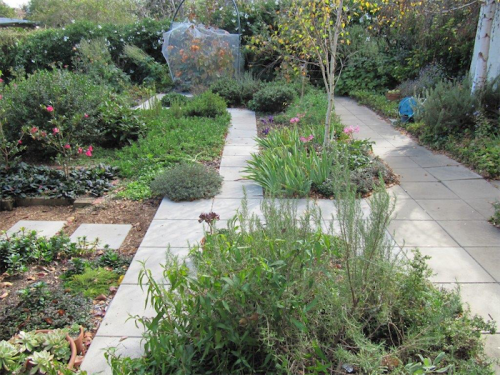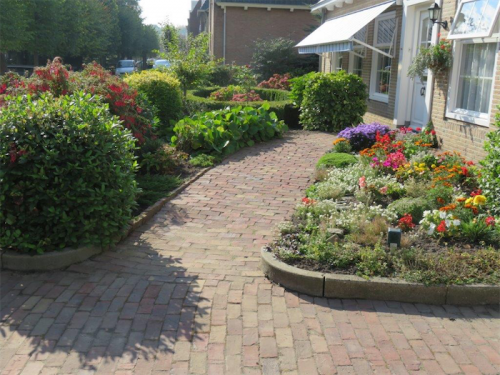
ONE of the first items in planning a garden is to consider where the paths should go.

Originally in Canberra every government-built home had just two paths, invariably straight; one to the front door, the other very narrow, to the rotary clothes line at the back. I couldn’t count the number of times I pulled up these paths when redesigning a garden.
An older home is often bought for the extra space for a real garden; a lawn area for children plus perhaps veggies and chooks.
When planning, consider having a circular path around the perimeter of the garden connecting all the various aspects. For small children this makes a great, safe tricycle path as well as for the wheelbarrow. I have used this idea with a variety of shrubs between the path and the house or lawn. The kids love this, disappearing from view as if they were in the jungle.
A path connecting to the clothesline, on to the garden shed, back door and to the side gate is better than making tracks across the lawn, often causing irreparable damage.
I have illustrated here an example with paths using Binks 400mm x 400mm concrete pavers, which are made in Canberra. In a small garden this size is ideal, wide enough for walking or a wheelbarrow.
The cheapest material for paths is decomposed granite, commonly referred to as Paddy’s River gravel. If well compacted there will be very few weeds and it will take all weathers. However, if you have polished timber floors it’s important to remove shoes, which can catch bits of gravel in the tread. I have been to homes with slippers by the front door for visitors.

WHEN making garden beds for veggies keep them to no more than 1m-1.5m wide, which ensures vegetables or herbs can be picked from either side without having to tread on the beds. It also makes it easier when replanting the next season’s crop.
In some garden magazines it illustrates paved patio areas with spaces between the pavers of perhaps 50 centimetres planted with mondo grass or thyme. This may look good in a magazine, but from experience it doesn’t work. It is impossible to water these plants adequately and, with the reflected heat, they quickly die.
Jottings…
- Always lay pavers and bricks on washed river sand, never on crusher dust.
- Choose locally made pavers. In the event of a problem it makes it easier to sort out.
- When using recycled bricks always put the “frog” or dent down. If facing up water collects and freezes in winter.
Who can be trusted?
In a world of spin and confusion, there’s never been a more important time to support independent journalism in Canberra.
If you trust our work online and want to enforce the power of independent voices, I invite you to make a small contribution.
Every dollar of support is invested back into our journalism to help keep citynews.com.au strong and free.
Thank you,
Ian Meikle, editor




Leave a Reply